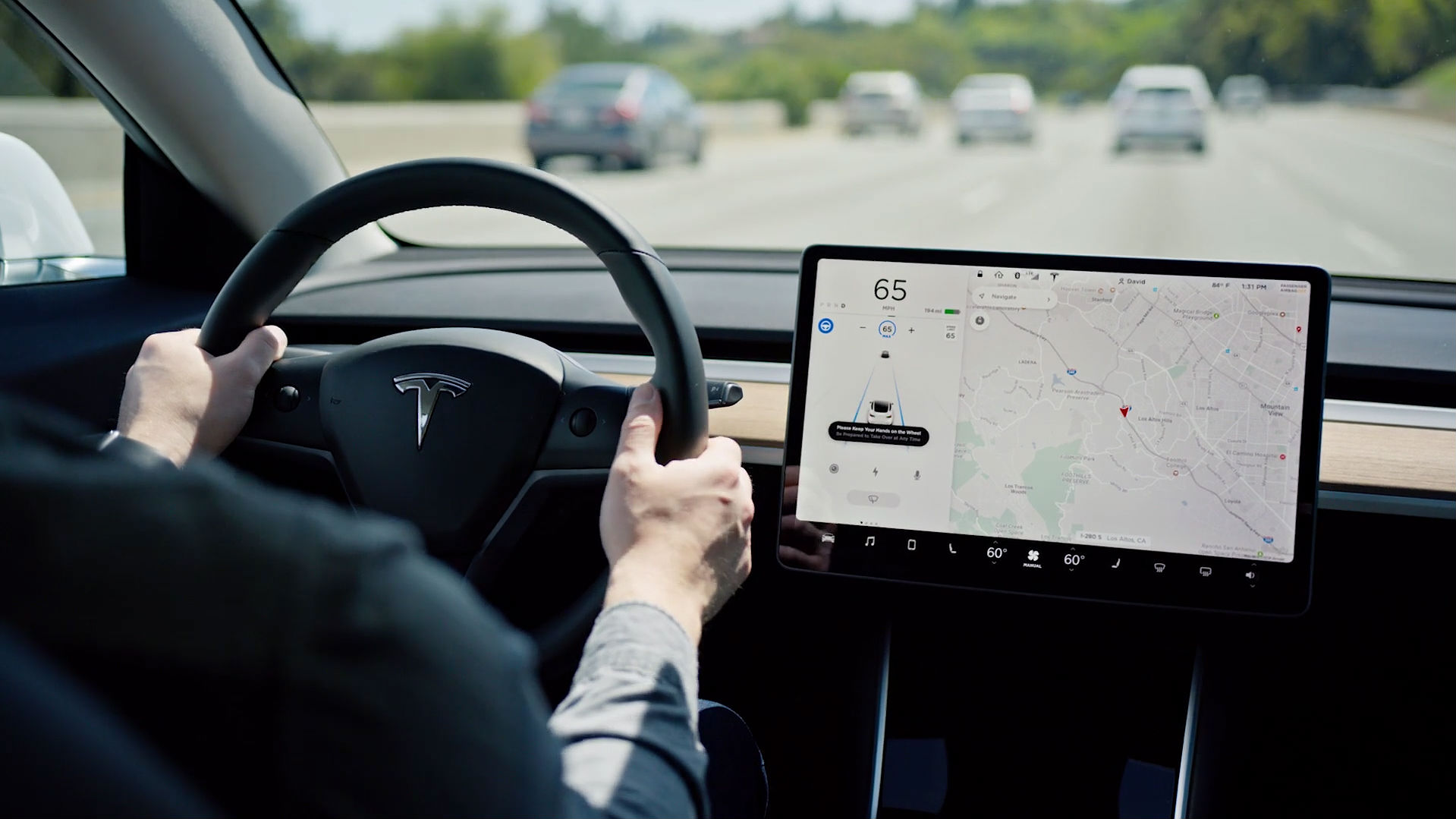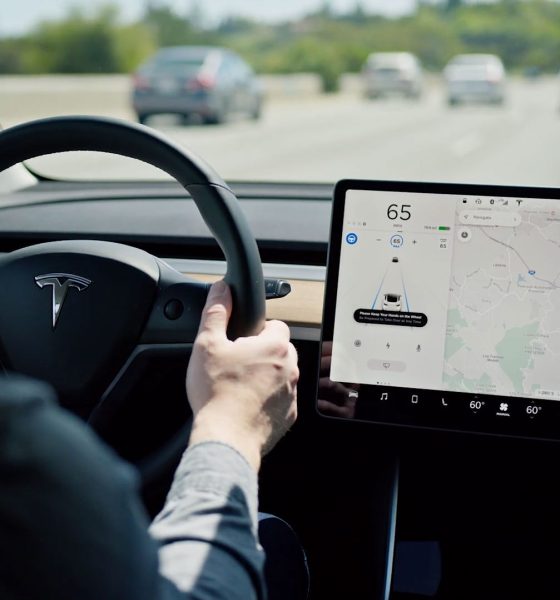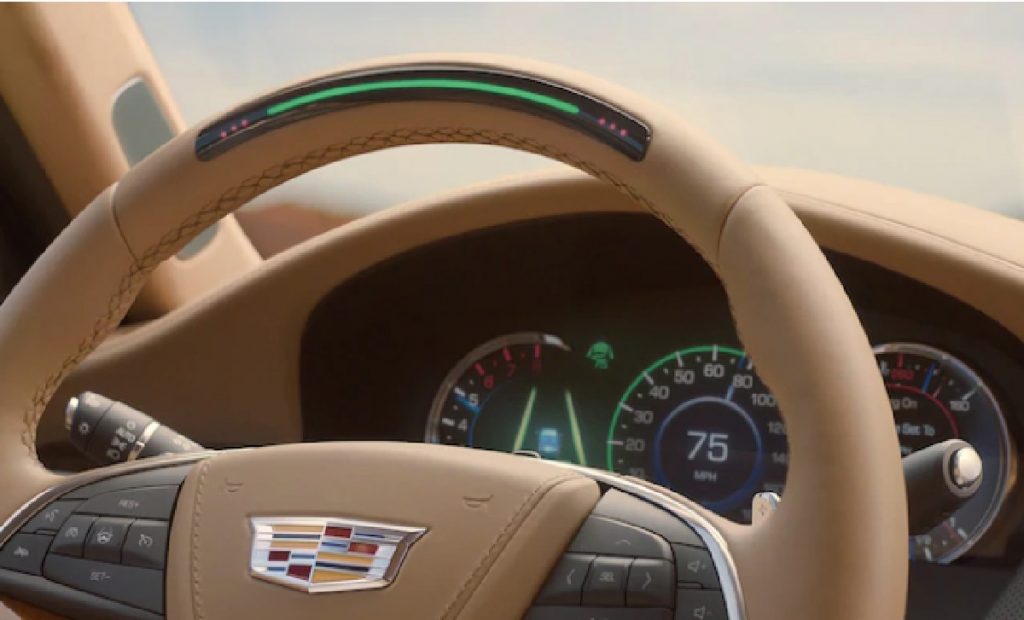

News
Tesla Autopilot is now a ‘distant 2nd’ to GM Super Cruise: Consumer Reports
Tesla’s Autopilot may have the best performance, capabilities, and ease of use in Consumer Reports’ recent ranking of active driving assistance systems, but it remains “a distant second” to GM’s Super Cruise nonetheless. This was according to the testing organization on Wednesday.
The results echo Consumer Reports’ findings in its first-ever ranking of active driving assistance systems back in 2018, which also ended with GM Super Cruise taking the top spot and Tesla Autopilot taking second place. This time around, the testing organization tested 17 systems from various carmakers, as opposed to the four that were evaluated in 2018. Needless to say, the results were quite interesting.
Each of the active driving assistance systems in this year’s test was evaluated under the following metrics: Capability and Performance, Keeping the Driver Engaged, Ease of Use, Clear When Safe to Use, and Unresponsive Driver. Tesla’s Autopilot aced two of these metrics, specifically Capability and Performance as well as Ease of Use. Autopilot earned an impressive score of 9/10 in Capabilities and Performance and a 7/10 for Ease of Use.

According to Consumer Reports, Autopilot performed the best among the 17 systems it tested in its lane-keeping assist tests. Autopilot was also deemed the best when it comes to how easy it is to use. Kelly Funkhouser, CR’s head of connected and automated vehicle testing, noted that systems that score well in Ease of Use usually require non-complex input from drivers. “One of the last things you want in a system that is supposed to assist the driver is to make things overly complicated,” Funkhouser said.
Unfortunately for Tesla, Autopilot was rated poorly by Consumer Reports when it came to the Keeping the Driver Engaged metric. For this metric, Tesla’s driver-assist system earned a paltry 3/10 score due to Autopilot’s alleged lack of driver monitoring systems. In contrast, GM’s Super Cruise, the highest-ranking system in this metric with a 7/10 score, was praised for its camera-based driver monitoring system that uses eye-tracking technology.
Super Cruise was also the top-ranked system with an 8/10 score in the Clear When Safe to Use metric, since the system could only be used on areas where the driver-assist suite could perform safely. “Cadillac stood out in this category because Super Cruise can be used only on pre-mapped, divided highways. Plus, Super Cruise will even warn the driver in advance when there is an upcoming lane-merge or complex situation that requires extra attention.,” Consumer Reports noted.

Tesla Autopilot earned a 2/10 score in Clear When Safe to Use, due to the system being accessible in areas that are not low-risk. “Active driving assistance systems should only be able to be activated in low-risk driving environments, void of pedestrians and tricky situations, such as intersections and complicated traffic patterns,” Funkhouser said.
Tesla Autopilot earned a 6/10 score for Consumer Reports’ Unresponsive Driver metric. This metric, as noted by the testing organization, evaluates systems based on their capability to operate vehicles safely in the event that the driver falls asleep or encounters a medical emergency. Systems were evaluated based on their escalation process for warnings, steering control, and speed control.
Overall, GM Super Cruise earned a total score of 69 from the testing organization, while Tesla Autopilot earned a total score of 57. Following closely was Ford Co-Pilot 360 at 52 and Audi Pre Sense at 48. Funkhouser, for her part, noted that Super Cruise’s driver monitoring system remains a difference-maker. “Even with new systems from many different automakers, Super Cruise still comes out on top due to the infrared camera ensuring the driver’s eyes are looking toward the roadway,” the head of connected and automated vehicle testing said.
Consumer Reports’ discussion of its recent active driving assistance suite rankings could be accessed here.

Elon Musk
Elon Musk’s X will start using a Tesla-like software update strategy
The initiative seems designed to accelerate updates to the social media platform, while maintaining maximum transparency.

Elon Musk’s social media platform X will adopt a Tesla-esque approach to software updates for its algorithm.
The initiative seems designed to accelerate updates to the social media platform, while maintaining maximum transparency.
X’s updates to its updates
As per Musk in a post on X, the social media company will be making a new algorithm to determine what organic and advertising posts are recommended to users. These updates would then be repeated every four weeks.
“We will make the new 𝕏 algorithm, including all code used to determine what organic and advertising posts are recommended to users, open source in 7 days. This will be repeated every 4 weeks, with comprehensive developer notes, to help you understand what changed,” Musk wrote in his post.
The initiative somewhat mirrors Tesla’s over-the-air update model, where vehicle software is regularly refined and pushed to users with detailed release notes. This should allow users to better understand the details of X’s every update and foster a healthy feedback loop for the social media platform.
xAI and X
X, formerly Twitter, has been acquired by Elon Musk’s artificial intelligence startup, xAI last year. Since then, xAI has seen a rapid rise in valuation. Following the company’s the company’s upsized $20 billion Series E funding round, estimates now suggest that xAI is worth tens about $230 to $235 billion. That’s several times larger than Tesla when Elon Musk received his controversial 2018 CEO Performance Award.
As per xAI, the Series E funding round attracted a diverse group of investors, including Valor Equity Partners, Stepstone Group, Fidelity Management & Research Company, Qatar Investment Authority, MGX, and Baron Capital Group, among others. Strategic partners NVIDIA and Cisco Investments also continued support for building the world’s largest GPU clusters.
News
Tesla FSD Supervised wins MotorTrend’s Best Driver Assistance Award
The decision marks a notable reversal for the publication from prior years, with judges citing major real-world improvements that pushed Tesla’s latest FSD software ahead of every competing ADAS system.

Tesla’s Full Self-Driving (Supervised) system has been named the best driver-assistance technology on the market, earning top honors at the 2026 MotorTrend Best Tech Awards.
The decision marks a notable reversal for the publication from prior years, with judges citing major real-world improvements that pushed Tesla’s latest FSD software ahead of every competing ADAS system. And it wasn’t even close.
MotorTrend reverses course
MotorTrend awarded Tesla FSD (Supervised) its 2026 Best Tech Driver Assistance title after extensive testing of the latest v14 software. The publication acknowledged that it had previously criticized earlier versions of FSD for erratic behavior and near-miss incidents, ultimately favoring rivals such as GM’s Super Cruise in earlier evaluations.
According to MotorTrend, the newest iteration of FSD resolved many of those shortcomings. Testers said v14 showed far smoother behavior in complex urban scenarios, including unprotected left turns, traffic circles, emergency vehicles, and dense city streets. While the system still requires constant driver supervision, judges concluded that no other advanced driver-assistance system currently matches its breadth of capability.
Unlike rival systems that rely on combinations of cameras, radar, lidar, and mapped highways, Tesla’s FSD operates using a camera-only approach and is capable of driving on city streets, rural roads, and freeways. MotorTrend stated that pure utility, the ability to handle nearly all road types, ultimately separated FSD from competitors like Ford BlueCruise, GM Super Cruise, and BMW’s Highway Assistant.
High cost and high capability
MotorTrend also addressed FSD’s pricing, which remains significantly higher than rival systems. Tesla currently charges $8,000 for a one-time purchase or $99 per month for a subscription, compared with far lower upfront and subscription costs from other automakers. The publication noted that the premium is justified given FSD’s unmatched scope and continuous software evolution.
Safety remained a central focus of the evaluation. While testers reported collision-free operation over thousands of miles, they noted ongoing concerns around FSD’s configurable driving modes, including options that allow aggressive driving and speeds beyond posted limits. MotorTrend emphasized that, like all Level 2 systems, FSD still depends on a fully attentive human driver at all times.
Despite those caveats, the publication concluded that Tesla’s rapid software progress fundamentally reshaped the competitive landscape. For drivers seeking the most capable hands-on driver-assistance system available today, MotorTrend concluded Tesla FSD (Supervised) now stands alone at the top.
News
Elon Musk’s Grokipedia surges to 5.6M articles, almost 79% of English Wikipedia
The explosive growth marks a major milestone for the AI-powered online encyclopedia, which was launched by Elon Musk’s xAI just months ago.

Elon Musk’s Grokipedia has grown to an impressive 5,615,201 articles as of today, closing in on 79% of the English Wikipedia’s current total of 7,119,376 articles.
The explosive growth marks a major milestone for the AI-powered online encyclopedia, which was launched by Elon Musk’s xAI just months ago. Needless to say, it would only be a matter of time before Grokipedia exceeds English Wikipedia in sheer volume.
Grokipedia’s rapid growth
xAI’s vision for Grokipedia emphasizes neutrality, while Grok’s reasoning capabilities allow for fast drafting and fact-checking. When Elon Musk announced the initiative in late September 2025, he noted that Grokipedia would be an improvement to Wikipedia because it would be designed to avoid bias.
At the time, Musk noted that Grokipedia “is a necessary step towards the xAI goal of understanding the Universe.”
Grokipedia was launched in late October, and while xAI was careful to list it only as Version 0.1 at the time, the online encyclopedia immediately earned praise. Wikipedia co-founder Larry Sanger highlighted the project’s innovative approach, noting how it leverages AI to fill knowledge gaps and enable rapid updates. Netizens also observed how Grokipedia tends to present articles in a more objective manner compared to Wikipedia, which is edited by humans.
Elon Musk’s ambitious plans
With 5,615,201 total articles, Grokipedia has now grown to almost 79% of English Wikipedia’s article base. This is incredibly quick, though Grokipedia remains text-only for now. xAI, for its part, has now updated the online encyclopedia’s iteration to v0.2.
Elon Musk has shared bold ideas for Grokipedia, including sending a record of the entire knowledge base to space as part of xAI’s mission to preserve and expand human understanding. At some point, Musk stated that Grokipedia will be renamed to Encyclopedia Galactica, and it will be sent to the cosmos.
“When Grokipedia is good enough (long way to go), we will change the name to Encyclopedia Galactica. It will be an open source distillation of all knowledge, including audio, images and video. Join xAI to help build the sci-fi version of the Library of Alexandria!” Musk wrote, adding in a later post that “Copies will be etched in stone and sent to the Moon, Mars and beyond. This time, it will not be lost.”








